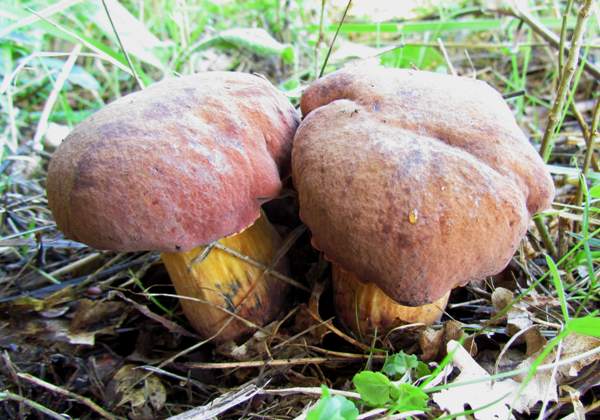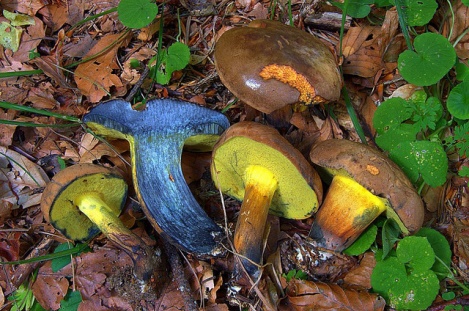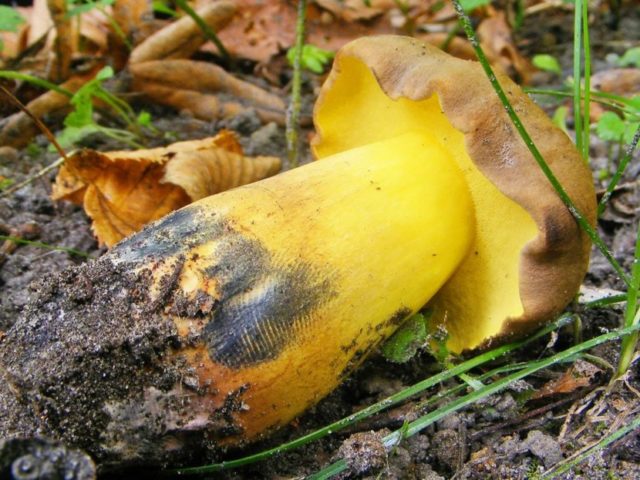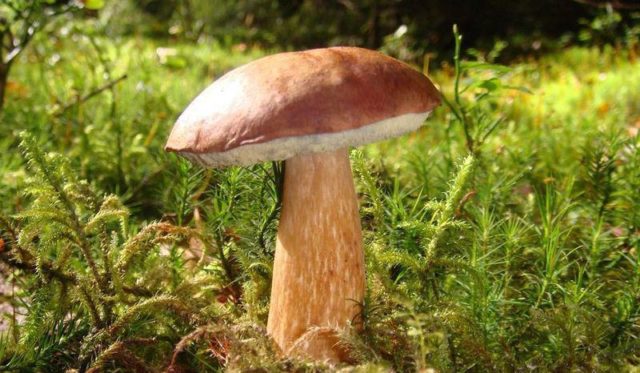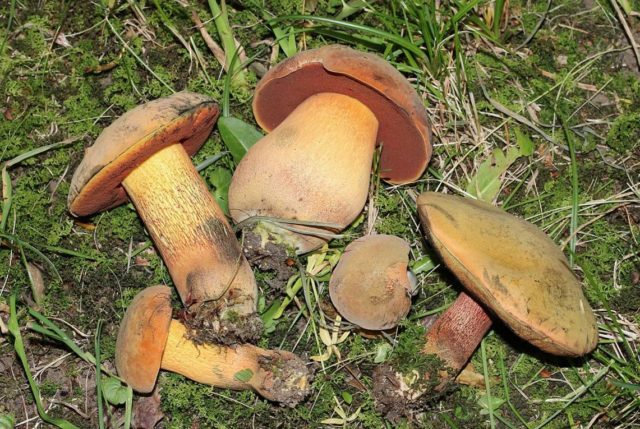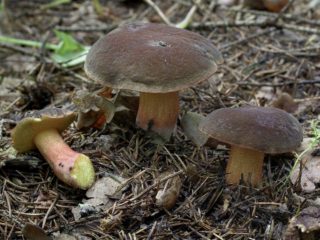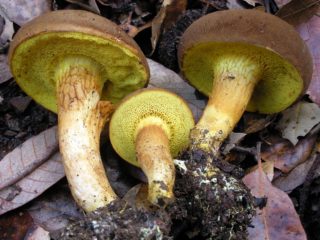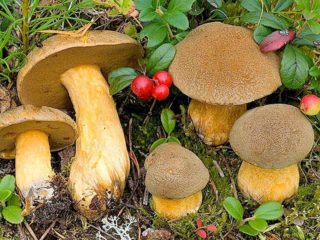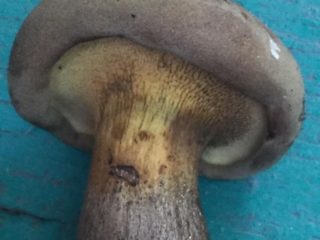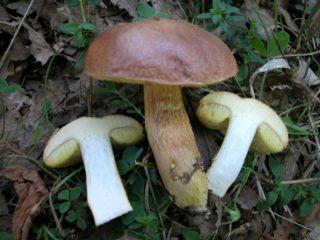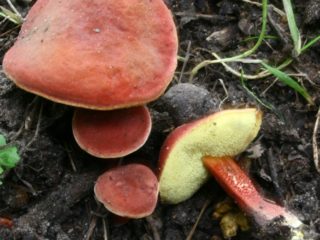Content
Powdered flywheel belongs to the Boletov family, belongs to the Cyanoboleth genus. The Latin name is Cyanoboletus pulverulentus, and the folk name is powdered and dusty boletus. The species is rare, found in warm temperate climates.
What do powdered flywheels look like?
Powdered boletus, like all mushrooms, has a cap from 3 to 10 cm in diameter. In young specimens, it is hemispherical, expanding, becomes convex, and the edges slightly curl upward. As you grow older, the border rises more and more. The skin looks matte and velvety, felt to the touch, sticky and slippery when it rains. The color of the cap also changes depending on the age and place of growth.
Aged mostly brown with different shades:
- gray;
- yellowish;
- chestnut;
- even a slightly red tint.
The edges of the caps of the dusty mushrooms are lighter. The lower plane of the boletus cap is powdered with a characteristic tubular layer with large pores. At a young age, the bottom is bright yellow, then gradually darkens to olive, ocher yellow or brown due to a change in the spore powder. A characteristic property of the powdered appearance is the rapid staining of the tubular layer in an ink-blue color, if it is even slightly touched. Dense yellow flesh, also turns purple at the cut.
Powdered flywheel stands on a strong leg of bright color:
- bright yellow above;
- to the middle in small mealy dots of red-brown color;
- near the soil, the base turns brown with a rusty or red tint.
The height of the leg is from 6 to 10-11 cm, diameter is 1-2 cm. In shape, it can be expanded downward or swollen. The flesh of the leg is firm, with a tough consistency. A rare mushroom has a characteristic rare odor. When cooked, the taste becomes soft and attractive.
Where powdered mushrooms grow
The kind of sickly powdered is common in areas with a warm temperate climate in the European south of Russia, as well as in the Far East. It is found in mixed and deciduous forests. Powdered mycorrhiza often forms on the roots of oak or spruce trees. Mushrooms are found growing singly or in groups, but quite rarely. Mushroom season for powdered boletus lasts from August to the end of September.
Is it possible to eat powdered mushrooms
Powdered boletus is considered an edible mushroom. But the species has not been thoroughly studied and is rather little known.
False doubles
In central Russia, a powdered look can be confused with a densely widespread chestnut or Polish mushroom. Dusty boletus species differs from this twin in an intense yellow tubular layer, as well as a bright leg with a mealy bloom.The flesh turns blue after cutting or when pressed, faster and much more intense than that of the Polish mushroom.
From other mushrooms, which are called oak trees in local dialects and also grow in oak forests, the dusted look can be distinguished by the bright yellow bottom of the cap. Duboviks are known for their reddish underside shade due to the color of the spore powder.
Unlike other mushrooms, pains, in the absence of a mesh on the leg.
Collection rules
The species is little known among mushroom pickers, since it is rarely found. They take powdered mushrooms in oak forests or mixed forests, near pines or spruces. The species is found in the southern regions. Having found a family of similar mushrooms, they are checked by the method of cutting the fruiting body. If you can see intense blue discoloration, up to black, and a rare smell is felt, the desired mushroom has been found.
Use
After boiling, the pulp of the mushrooms acquires a pleasant, appetizing shade. Mushrooms are also used for blanks. It is better for persons suffering from gastrointestinal disorders and children to refuse such long-digesting food.
Conclusion
Powdered flywheel is collected, having well studied its external differences. The edible mushroom, judging by the reviews, is quite tasty, the dishes are delicious.
